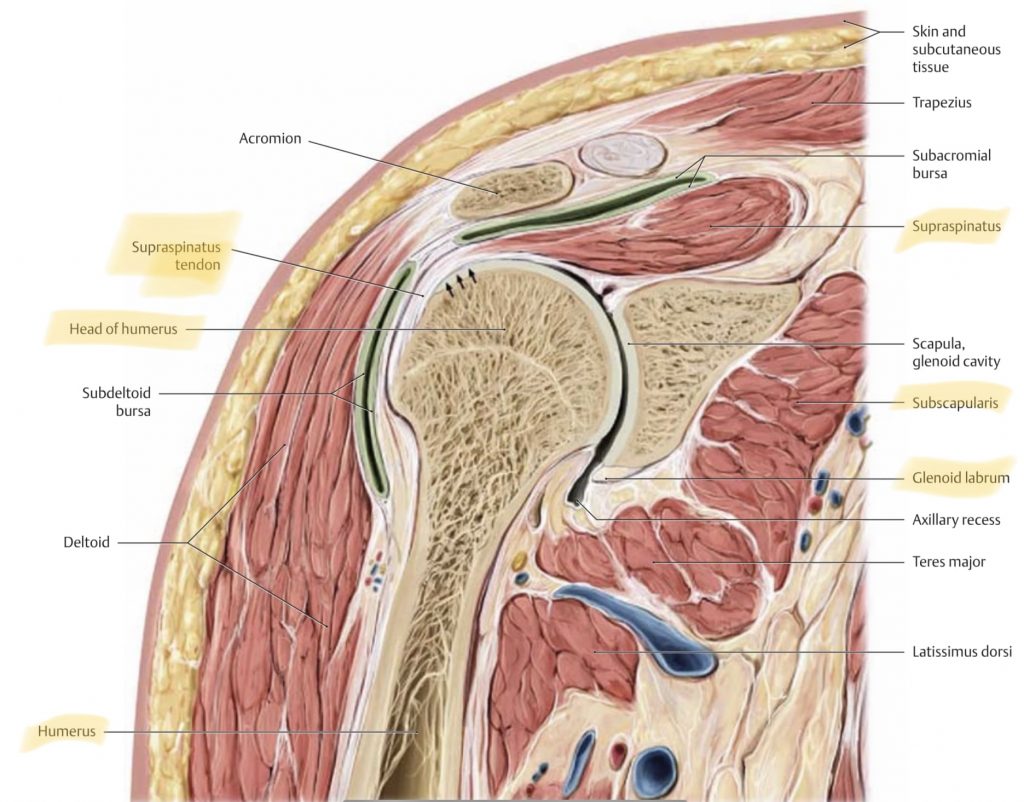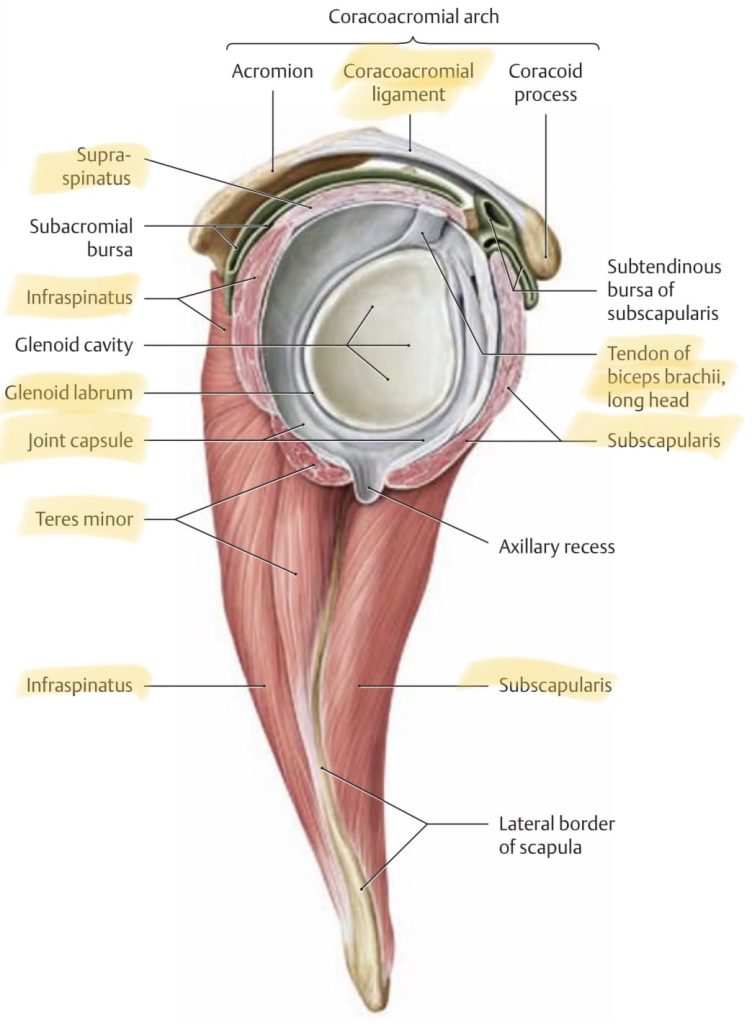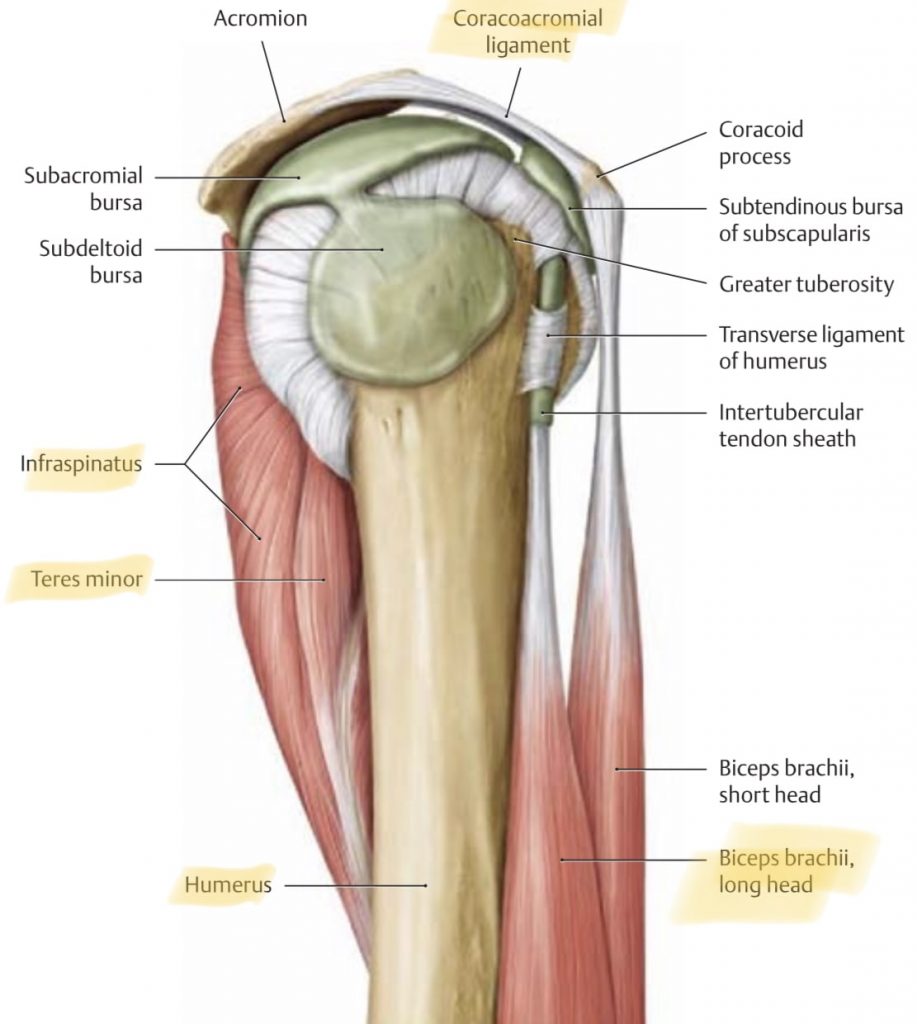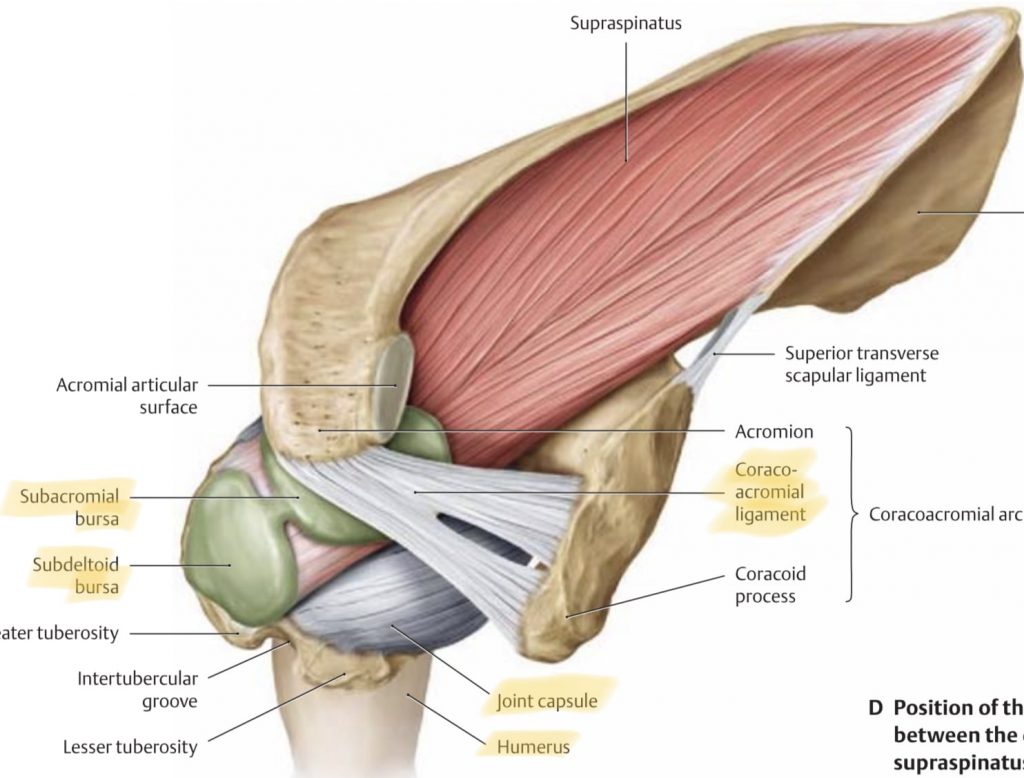There are 3 reasons why your shoulder can hurt, either due to an acute accident that damaged structures in the shoulder, or overuse which might or might not have provoked any actual tissue damage or referred pain from the neck.
In rock climbers all the above-mentioned origins of shoulder pain are common, yet overuse injury is the dominant one of the three.
Let’s find out which is the origin of your shoulder pain.
1. Structural Damage due to an Accident
A common accident while rock climbing is the slipping of a foot hold which then puts sudden stress on your shoulder girdle, elbow, wrist, and finger joints. This is a common origin of pully injuries but can also lead to injuries in the shoulder. Furthermore, pulling hard in internal rotation, gaston moves, and boulder falls can also lead to acute shoulder injuries.
It depends on the type of accident in which structures are more likely to be injured and are causing your pain. Below I’ll elaborate on the different accidents, which structures can be damaged, and which symptoms you might experience besides pain.
Didn’t you have an accident?
Then you might be experiencing shoulder pain due to an overload injury or because of an issue in your neck. You’ll read all about that in chapters 2 and 3.
1.1 Slipping off a Foot Hold
Injury Mechanism: when you slip off a foothold there’s a sudden increase in a pull on the arm which lifts most of your body weight. Your shoulder isn’t prepared for this change and several structures might tear or rupture.
Possible Injured Structures: labrum, supraspinatus tendon, infraspinatus tendon, long head of the biceps tendon, and the acromioclavicular ligament.
Symptoms: besides pain in the shoulder itself you can feel pain radiating along your upper arm, sometimes until your hand. It can be hard to lift your arm sideways (harder than lifting forwards) and your shoulder might feel unstable. If it’s just the labrum that’s damaged there can be angles at which your shoulder feels fine where another might be particularly painful. In case of partial or complete tears, you might’ve heard a snap and if the tendon of the long head of the biceps is torn you might notice a difference in biceps morphology compared to the healthy side.

1.2 Pulling Hard in Excessive Internal Rotation
Injury Mechanism: an inward-facing side pull forces you to pull outwards and puts your shoulder in internal rotation. The amount of internal rotation depends on the height of the hold in relation to the length of your body. This is a challenging position for the shoulder and can lead to an acute overload. Since the external rotators of the rotator cuff prevent the humerus from dislocating in internal rotation, they might just as well be injured as the internal rotators which make the movement.
Possible Injured Structures: subscapularis muscle and/or tendon, supraspinatus muscle and/or tendon, infraspinatus muscle and/or tendon, teres minor supraspinatus muscle and/or tendon.
Symptoms: depending on the damaged structure you feel pain and weakness during movement when abducting the arm, lifting it forward, slipping into the sleeve of your jacket, or putting the hand on your back. You’re less likely to feel pain when you don’t move your arm.

1.3 Gaston Move with or without Foot Slip
Injury Mechanism: putting a lot of pressure on the arm that holds the gaston puts stress on the anterior structures of the shoulder. Slipping off a foothold will increase the tension suddenly and can lead to injury. Still, also without the foot slip, a gaston move can cause trauma due to the challenging position it puts the shoulder in.
Possible Injured Structures: subscapularis muscle/tendon, labrum, long head of the biceps, anterior capsule.
Symptoms: difficulty putting your hand on your back, instability, and more weakness during internal rotation than during external rotation.
Technique Tip: if you make a gaston move, be sure to pull your scapula down and back (depressed and retracted) to unload the structures in the shoulder as much as possible.

1.4 Falling Forward on an Extended Arm
Injury Mechanism: you fell off a boulder problem with an extended arm or an unlucky sports climbing fall.
Possible Injured Structures: labrum, supraspinatus tendon, acromioclavicular ligament, humerus.
Symptoms: a fracture of the humerus will be accompanied by severe weakness, pain both at rest and during movement, and swelling and coloring of the area where the fracture occurred. A tear in the labrum, supraspinatus tendon, and acromioclavicular is more likely to provoke weakness, instability, and pain during movement.

1.5 Falling on your Shoulder
Injury Mechanism: you fell off a boulder problem and landed on your shoulder or you had an unlucky fall while sport climbing.
Possible Injured Structures: acromioclavicular joint/ligament, coracoclavicular ligament, humerus fracture, and/or bone bruise, and depending on the angle any other structure in the shoulder could be damaged.
Symptoms: as described under 1.4.
Did you fall on an extended arm or directly on your shoulder and do you have pain without moving your arm? Then visit an emergency room nearby right away. Because impact injuries are more likely to result in fractures than other injury mechanisms and should be treated as soon as possible.
Did you have an accident, but there’s no actual injury?
Then it’s possible the accident caused hypertension or a change in coordination of the shoulder muscles. This is a more subtle problem and can only be assumed after you made sure that there’s no structural damage. Nevertheless, to make things more complicated, both can occur at the same time. Structural damage and an overload injury without structural damage.
2. Shoulder Pain due to Overuse
There are 3 ways your shoulder can hurt because of overuse:
- Rotator Cuff Related Pain Syndrome with or without tendinopathy or bursitis
- Shoulder instability due to a disbalance in shoulder muscle coordination
- Hypertension of the muscles in and around the shoulder
Overload of the structures in the shoulder is a direct result of 1 or more of the following circumstances:
- Repeating the same moves over and over
- Not taking sufficient rest between climbing or training days
- Overloading your shoulder muscles by not moving them at all, by sitting for long periods at work for example
2.1 Rotator Cuff Related Pain Syndrome (“Shoulder Impingement”)
Rotator Cuff Related Pain Syndrome (RCRPS) is the new term for what previously was called “shoulder impingement”. Because it turns out there are no impinged structures with “shoulder impingement” and the tests that supposedly show you which structure is damaged proved to be unreliable.
RCRPS is characterized by pain within the shoulder and sometimes by radiating pain down the arm. You can have a reduction in mobility and/or reduced strength. The origin of RCRPS is a dysfunction in the rotator cuff muscles. They’re either weak, tense or not working together efficiently.
You could have structural damage with RCRP. You might have bursitis or tendinopathy; however, this isn’t necessarily the origin of your pain.
2.2 Shoulder Instability
Shoulder Instability can be congenital or can be due to one of the accidents I described in the first part of this article, or to a coordination problem in the rotator cuff. When these stabilizers don’t work together efficiently, instability can be the result.
The main symptom of shoulder instability is, yes you guessed it right, instability. This can be anything from a slight discomfort in certain angles to general weakness in the entire joint with or without the risk of dislocation.
2.3 Hypertension
You have tense muscles. Everyone does.
But do you notice them? That’s another question.
When I assess the tension of the muscles in my patients, I have noticed that when I feel tension, they might not perceive it as such. Or the other way around, that when I feel little tension, they feel a lot.
So, the most important thing for me, and thus for you whenever you assess yourself, is to look for muscle tension while investigating a familiar pain. If that’s the case, then working on reducing the tension will diminish your complaints.
Tension can be generalized throughout a muscle or body area, or it can be concentrated in one spot, which is called a trigger point. And as always, both can occur at the same time. You can treat tension yourself by doing self-massage with the help of tools like a foam roller, tennis ball, lacrosse ball, or a massage stick.
3. Shoulder Pain coming from the Neck
Shoulder pain coming from the neck is less common in rock climbers, yet it’s the first thing I exclude from my assessment. I look for the following:
- Do you have pain along a dermatome?
- Do you have sharp shooting pain down the arm, possibly also at rest?
- Do you experience a loss of sensation along the arm?
- Do you experience weakness along the arm?
- Do you have a history of neck problems?
- Do you have reduced mobility in the cervical spine?
If you answered yes to any of these questions, I’d see if I can provoke your pain by testing the cervical spine and the nerves going into the arm. Because these symptoms can be a consequence of a herniated disc, radiculopathy, or peripheral nerve entrapment. Each of these origins of shoulder pain requires a more careful treatment approach.
If you suspect your neck might be an issue make sure to contact a healthcare professional as soon as possible.
4. Important Takeaways
Here are 2 final thoughts on the origin of your shoulder pain.
- As always, a combination of all origins is possible. This means that the treatment approach should be tailored accordingly.
- Just like overuse, underuse can also be an origin of shoulder pain. This is more common after surgery whereafter you must keep your arm in a sling and can’t move it for up to 6 weeks. This leads to stiffening of the muscles (hypertension) and can lead to capsular restriction as well.
